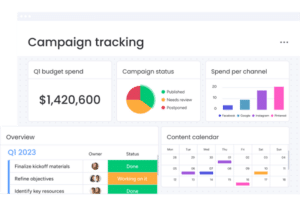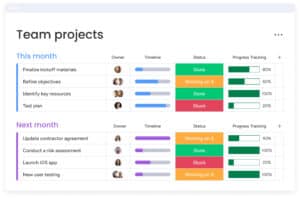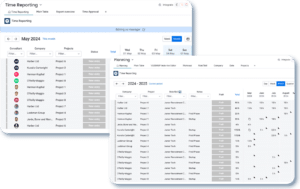Introduction
Have you ever found yourself midway through a project, only to realize that the goalposts have mysteriously moved? This phenomenon, known in the project management world as ‘scope creep,’ can be daunting. It’s the gradual yet insidious expansion of a project’s objectives and deliverables, often without corresponding increases in resources or adjustments in timelines. Managing project scope creep is crucial, as it can lead to delays, budget overruns, and compromised project quality. Hence, in this blog post, we’ll delve into some strategies and tips for managing project scope creep.
But why is managing project scope creep such an essential skill in today’s fast-paced project environments? The answer lies in the complexity and dynamic nature of modern projects. From evolving client demands to unforeseen market changes, various factors can push a project beyond its original boundaries. In this blog post, we will dive deep into strategies and tips for managing project scope creep effectively. Our goal is to equip you with the knowledge and tools to keep your projects on track, ensuring they meet their objectives without overextending resources or timelines.
By the end of this guide, you’ll have a robust framework for managing project scope creep. This will enable you to lead your projects to successful completion while maintaining control over their scope.
Understanding the Causes of Project Scope Creep
Before delving into the intricacies of managing project scope creep, it’s vital to understand its root causes. Recognizing these triggers is the first step in developing a robust strategy for scope management. Here, we explore the most common factors leading to scope creep and how they can impact your project’s trajectory.
Lack of Clear Project Objectives
One of the primary causes of scope creep is the absence of well-defined project objectives. When goals are vague or open to interpretation, it creates a breeding ground for additional tasks and features to creep in, often unnoticed. This ambiguity not only hampers the process of managing project scope creep but also makes it challenging to measure project success accurately.
Poor Stakeholder Engagement
Effective stakeholder engagement is critical in managing project scope creep. Stakeholders, if not adequately involved or if their expectations are not clearly managed, can inadvertently contribute to scope creep by requesting additional features or changes without understanding the implications on the project’s scope, budget, or timeline.
Inadequate Change Control Process
A project without a robust change control process is like a ship without a rudder. It’s prone to drifting off course. An inadequate or non-existent change control process makes managing project scope creep a near-impossible task. It allows changes to be made without proper review or understanding of their impact. This leads to a cumulative effect that can significantly derail a project.
By identifying these key factors, project managers can develop targeted strategies and tips for managing project scope creep. This understanding not only helps in mitigating risks but also ensures that the project remains aligned with its original objectives and outcomes.
Omnitas Newsletter
Sign up for our monthly newsletter to stay up-to-date on our latest blog articles, videos and events!
Thank you!
You have successfully joined our subscriber list.
Proactive Strategies to Prevent Scope Creep
While managing project scope creep is a reactive process, preventing it requires proactive planning and strategies. By addressing scope creep before it takes root, you can safeguard your project against unnecessary complications and overruns. Let’s explore some effective strategies that can be implemented from the project’s inception to keep scope creep at bay.
Establishing Clear Project Goals and Objectives
The cornerstone of preventing scope creep lies in setting crystal-clear project goals and objectives right from the start. This clarity provides a solid foundation for all project decisions and helps in managing project scope creep by acting as a reference point for evaluating proposed changes. Ensure these objectives are SMART (Specific, Measurable, Achievable, Realistic, Timely) to guide your project on a clear path.
Effective Communication with Stakeholders
Effective communication is vital in managing project scope creep. Regular and transparent communication with stakeholders helps in aligning expectations and addressing concerns early on. It also fosters a collaborative environment where changes are discussed and assessed in the context of their impact on project scope, timeline, and budget.
Implementing a Robust Change Management Process
A robust change management process is your best defence against scope creep. This process should clearly define how changes are proposed, reviewed, and approved. It ensures that any modifications to the project scope are carefully evaluated for necessity and feasibility, thus managing project scope creep by allowing only those changes that add value and are aligned with the project objectives.
By implementing these proactive strategies, you can significantly reduce the risk of scope creep disrupting your project. Remember, managing project scope creep isn’t just about reacting to changes. It’s about setting up a project structure that minimizes the chances of those changes occurring in the first place.
Tools and Techniques for Managing Scope Creep
In the dynamic landscape of project management, having the right tools and techniques is essential for effectively managing project scope creep. These resources not only help in monitoring project progress but also provide mechanisms to quickly identify and address scope changes. Let’s delve into some of the most effective strategies and tips for managing project scope creep.
Utilizing Project Management Software
Advanced project management software like monday.com is a game-changer in managing project scope creep. These platforms offer a centralized space for tracking project progress, managing resources, and documenting changes. With features like task assignments, deadline reminders, and progress tracking, tools like monday.com enable project managers to maintain tight control over the project scope and quickly respond to any deviations.
Regular Monitoring and Reporting
Consistent monitoring and reporting are critical techniques in managing project scope creep. Regular project reviews and status reports help in identifying scope changes early, allowing for timely intervention. This ongoing vigilance ensures that any deviation from the original scope is promptly evaluated and addressed, maintaining the project’s alignment with its defined objectives.
Agile Methodologies and Flexibility
Incorporating agile methodologies can be highly effective in managing project scope creep. Agile approaches, with their emphasis on flexibility and iterative progress, allow for better accommodation of changes without significantly derailing the project. By breaking the project into smaller, manageable segments (sprints), agile methodologies provide a structured yet flexible framework for accommodating scope changes in a controlled manner.
Employing these tools and techniques forms a robust defence against the pitfalls of scope creep. By integrating advanced software solutions like monday.com, maintaining rigorous monitoring, and embracing agile methodologies, project managers can adeptly navigate the challenges of managing project scope creep, and steering their projects towards successful completion.

Integrating Automation and Integration Tools for Better Control
In the quest for managing project scope creep effectively, integrating automation and integration tools plays a pivotal role. These tools streamline processes, enhance efficiency, and provide greater control over project variables. Let’s explore how these technological solutions can be leveraged to fortify your strategy against scope creep.
The Role of Automation in Managing Changes
Automation tools like Make are invaluable in managing project scope creep. They can automate routine tasks, such as updating project timelines and resource allocations in response to scope changes. By automating these processes, project managers can focus more on strategic decision-making and less on administrative tasks. Automation also ensures consistency and accuracy in managing project data, crucial for keeping the scope in check.
Integration Solutions for Streamlined Processes
Make also offers a seamless way to connect various project management tools and systems. This integration is key to managing project scope creep as it allows for real-time data sharing and updates across different platforms. For instance, changes in project scope documented in a project management tool like monday.com can automatically update budgets in accounting software. This interconnectedness ensures all team members and stakeholders are on the same page, reducing the risk of miscommunication and unaligned expectations.
Incorporating these advanced tools into your project management toolkit not only assists in managing project scope creep but also elevates the overall efficiency and effectiveness of the project management process. By harnessing the power of automation and integration, project managers can achieve a higher level of control and precision, guiding their projects towards successful and timely completion.
Conclusion
Effectively managing project scope creep is a critical component of successful project management. Throughout this article, we have explored various strategies, tools, and real-life case studies that underscore the importance of proactive and reactive approaches to scope management. From establishing clear objectives and engaging stakeholders to utilizing advanced software like monday.com and Make, these methods collectively provide a comprehensive framework for keeping projects on track.
Remember, managing project scope creep is not just about responding to changes; it’s about anticipating them and having robust systems in place to mitigate their impact. By embracing these strategies and tips for managing project scope creep, you can enhance your ability to deliver projects within their intended scope, timeline, and budget.
If you found this article helpful and wish to stay informed about more such topics, don’t miss out on our valuable insights. Sign up for our monthly newsletter to keep abreast of the latest trends and best practices in project management, automation, and more. Your journey towards mastering the art of managing project scope creep and other project management challenges begins here.
























